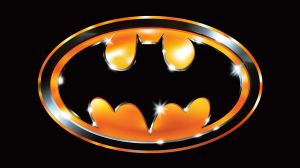The Batman finally makes its way into theaters this week, and there’s been a lot of speculation around how it will uniquely adapt the storied aspects of DC Comics lore. The film will feature some heavy hitters from the Caped Crusader’s supporting cast, including a new take on Selina Kyle / Catwoman portrayed by Zoe Kravitz. Catwoman is arguably one of the most well-known female characters in DC’s arsenal, with a decades-long career as a hero, a villain, and everything in between. Ahead of her newest live-action appearance in The Batman, here’s what you need to know about her history on the page, screen, and beyond.
Videos by ComicBook.com
Catwoman has been tied to the mythos of Batman essentially from the start, debuting as a cat burglar known as “the Cat” in 1940’s Batman #1. Co-creators Bob Kane and Bill Finger created the character for a number of reasons – appealing to female fans, providing a formidable love interest for Batman, and introducing a villain who wasn’t as overtly malicious or lethal as antagonists like The Joker. After a number of memorable appearances, her origin story was fully explored in 1950’s Batman #62, which established her as a formerly mild-mannered flight attendant who turned to crime after a plane crash gave her amnesia.
Despite her prominence across the Golden Age Batman books, Catwoman had a decade-plus absence from the comics from 1954 to 1966, after rules within the Comics Code Authority put restrictions on how female characters were represented in the comics. Even then, Catwoman did become a household name during that stretch of time, thanks to portrayals from Julie Newmar, Lee Meriwether, and Eartha Kitt in the Batman television series and subsequent movie. Selina then returned to the Batman comics in the tail end of the Silver Age, and a number of stories in the 1970s and 1980s progressed the Golden Age version of Selina’s story, which were now set on the alternate world of Earth-Two. This incarnation of Selina shed her villain persona, married Bruce, and gave birth to their daughter, Helena Wayne. These stories also revealed that Golden Age Selina hadn’t really had amnesia, but had adopted the Catwoman persona after escaping an abusive marriage. She then met her death in 1977’s DC Super-Stars #17, which was the inciting incident of Helena becoming the Earth-Two version of Huntress.
Meanwhile, the Earth-One incarnation of Selina was given the spotlight in a number of stories – particularly in 1987’s Batman: Year One and 1989’s Catwoman miniseries. These stories established her as a former sex worker who trained to fight under Ted Grant / Wildcat, and also introduced two of her closest allies – Holly Robinson, her young ward; and Maggie Kyle, her nun sister. The 1980s and 1990s sporadically showcased Selina’s romantic, but antagonistic rapport with Bruce, as well as her beef with the Falcone Crime Family, with her even starting to believe that she is secretly the daughter of Carmine Falcone. Around the same time, Michelle Pfeiffer embodied the character in 1992’s Batman Returns, which reimagined Selina as a disaffected secretary who becomes Catwoman after being saved by a horde of alley cats.
Her story was most notably explored in Ed Brubaker and Darwyn Cooke’s 2001 Catwoman solo run, which saw her protecting Gotham’s East End neighborhood, while trying to avoid the investigations of private eye Slam Bradley. Simultaneously, one of the weirdest incarnations of the character was established in 2004’s Catwoman — Halle Berry’s Patience Phillips, a mild-mannered woman who gains the powers of a cat and uses them to take down the corrupt cosmetics company she works for. In the comics, as she begins to operate more heroically within the larger DC universe – and develops a romantic relationship with Batman – she eventually learns that her change of heart was caused by the Justice League wiping her mind around the events of Identity Crisis. This leads Selina to question her path as a costumed fighter, culminating in her killing Black Mask.
Once DC jumped ahead to its “One Year Later” storyline, Selina had retired from being Catwoman and had just given birth to a new version of Helena (whose father is later believed to be Slam Bradley Jr.), with Holly operating as Catwoman in Selina’s place. During this stretch of time, Selina begins to doubt whether or not she can balance being a hero and a mother, and gives Helena up for adoption. The next few years are wild for Selina – she gets sent to the alien Prison Planet, she gets put into a coma by Hush, she teams up with Harley Quinn and Poison Ivy as a member of the Gotham City Sirens, and she later gets her own sidekick in the form of another one of Falcone’s long-lost daughters, Kirtina Falcone / Catgirl.
The New 52 continuity then elected to dive into Selina’s earlier days as Catwoman, with an origin story that was inspired by Pfieffer’s portrayal in Batman Returns. Selina was then invited to join the Justice League of America, and eventually became a crime boss, during which a young woman named Eiko Hasigawa stepped into the Catwoman mantle. Simultaneously, two live-action versions of Catwoman made their debut – Anne Hathaway’s traditional femme fatale in The Dark Knight Rises, and Cameron Bicondova’s young Selina in the Gotham television series.
Later, in the DC Rebirth continuity, Selina became a prolific part of Batman’s solo book, becoming an ally of Bruce’s and eventually his fiancee. As the pair are about to get married, Holly (at the behest of Bane) manipulates Selina into getting cold feet, and she escapes to California and focuses on taking down a crime family. She would then periodically return to Gotham, becoming an ally of Batman’s once again, and also helping reform her home neighborhood of Alleytown.
With all of this in mind, it’s anyone’s guess as to how Catwoman’s story will be established in The Batman, although Kravitz has cited Year One as a source of inspiration. Either way, it’s safe to say that the character will be building on a pretty storied history.
The Batman will be released in theaters on March 4th.








